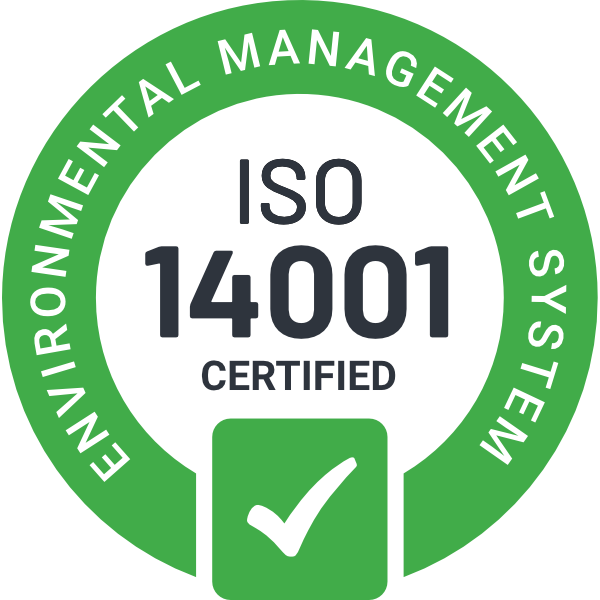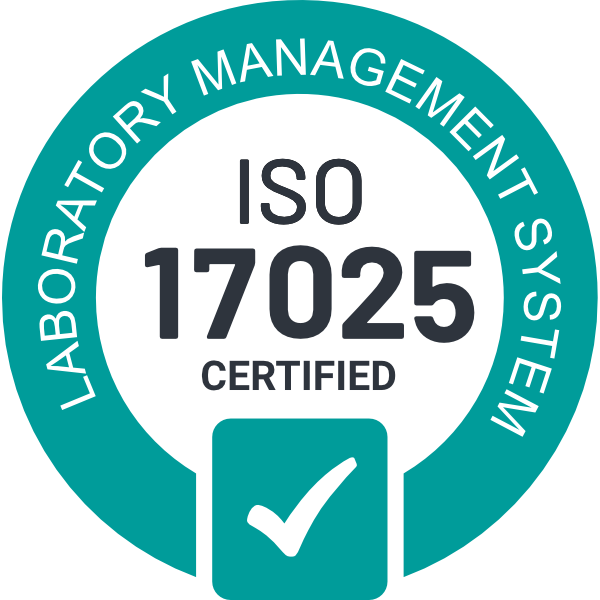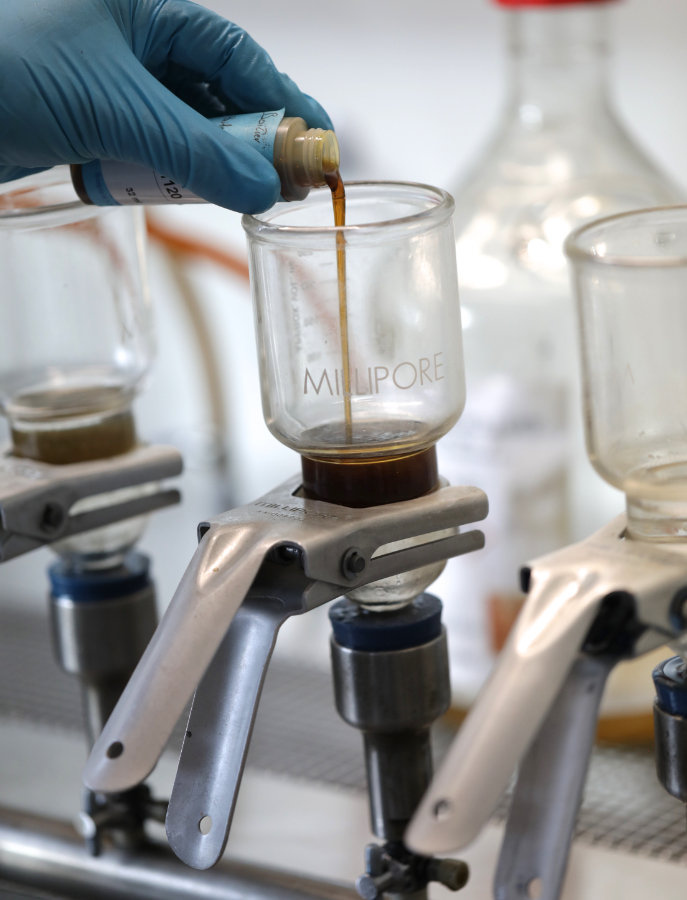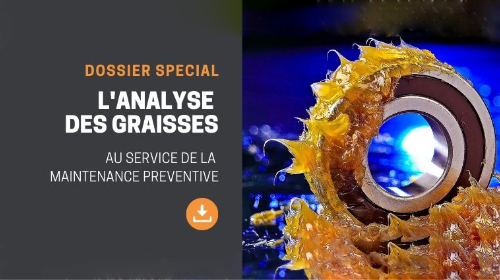Analysis of molybdenum disulfide grease
Like oil, industrial grease allows lubrication of machines and mechanical equipment to prevent deterioration of their condition. There are different types of grease:
- High temperature
- Extreme/heavy duty
- Water-resistant
- Multi-purpose
Each type of grease has characteristics and properties that vary depending on their uses and applications. Eurofins IESPM provides an overview of two types of grease, used in extreme conditions (high temperature, low temperature, high pressure), which require monitoring through appropriate analysis as part of preventive maintenance operations for equipment.
It concerns graphite grease and molybdenum disulfide grease.
What is molybdenum disulfide grease?
Just like graphite grease, molybdenum disulfide grease is an industrial grease used in extreme conditions, possessing specific characteristics and properties.
In the context of preventive maintenance operations, it is important to monitor the condition of molybdenum disulfide grease through analytical monitoring tailored to its specific composition.
The grease additive with molybdenum disulfide is a mixture of oil, soap (such as lithium), and additives including a solid additive: molybdenum disulfide.
Le bisulfure de molybdène assure une lubrification supplémentaire ou de secours.
Molybdenum disulfide grease is a high-pressure grease that enables lubrication of components subjected to high loads.
Indeed, the presence of molybdenum disulfide in a thin layer prevents contact between lubricated surfaces during slow movements (seizure).
Resistant to high temperatures and water, it also provides protection to components against atmospheric agents and adverse weather conditions.
It is typically used in heavy industries (especially steelmaking), quarries, public works, heavy transport, marine, etc., and particularly on lubricated components:
- bearings
- chains
- slides
- slewing rings
- cables
- sprockets
- worm gears
- open gears
What are we analyzing?
Like any lubricant, molybdenum disulfide grease degrades over time.
Analyzing the grease present on equipment in service allows to determine its condition and to check the internal wear of the lubricated component.
The implementation of monitoring through analysis is particularly beneficial due to the specificity of this grease. Indeed, the consistency of molybdenum disulfide grease and its black color make its analysis more complex than that of a typical industrial grease. Therefore, it is more difficult to visually assess its condition with the naked eye.
For example, it is much more difficult to visually assess the evolution of its condition with the naked eye. To conduct a relevant analysis, Eurofins IESPM offers its clients more specific analytical tests.
Analyses and Checked Points
THE CHARACTERISTICS OF GREASES
- Base oil viscosity
- Acid Number (AN)
- Dropping Point
- Consistency (NLGI grade)
- Anti-wear, extreme pressure properties
- ICP Spectrometry
- …
POLLUTION
- Insolubles (sands, dust, metal wear particles)
- Water
- Contamination by another grease
- ICP Spectrometry
- …
WEAR
- Ferrometry – MO IESPM
- Scanning Electron Microscopy Analysis
- Particle Quantifier (PQ)
- ICP Spectrometry
- …
Our Quality Assurance



Equipment, Sampling Techniques, and Results Interpretation
In the context of regular maintenance programs, Eurofins IESPM provides you with grease analysis for your equipment.
- A plastic jar of 100ml
- Two tracking labels
- A mailing envelope
It is essential that the sample taken be representative of the entire grease load in contact with the monitored wear couple. The sampling of industrial grease is a delicate operation: access to the sampling point is often difficult (mechanical constraints, environmental conditions, etc.) and due to its consistency, the grease is sometimes available only in small quantities.
In some cases, given the technology of mechanical components, multiple samples may be necessary to obtain a fully representative picture. We strongly advise you to seek assistance from professionals like Eurofins IESPM to determine the best approach and to study case by case the appropriate sampling methods.
Once the sampling is done, you need to fill in the technical information regarding your sample. You can check out our dedicated article for tips on how to register a sample: Go to the page.
Before sending, remember to:
- Clean the container carefully to remove any traces of grease.
- Stick one of the two labels provided in the kit onto the container.
"Expert Advice:
The grease sampling process requires special attention. Remember to undergo training.
Don't forget to send us a sample of new grease for reference."
You have just received the diagnosis of the analyses carried out in the laboratory.
This provides you with detailed and reliable information about the condition of the grease and the level of wear on your equipment. Following these results, we offer personalized recommendations to assist you in the condition-based maintenance of your mechanical equipment.
Example of diagnosis for the analysis of molybdenum disulfide greases
EXAMPLE OF DIAGNOSTIC
Grease analysis

Discover an example of diagnosis for grease analysis.
SPECIAL REPORT
On our grease analysis
Grease is a lubricant present in many applications: rolling stock or industrial equipment. It has an essential function in the operation…
VIDEOS
The interest of analytical monitoring
Discover in video how implementing regular monitoring of the greases in service in your equipment contributes to increasing their longevity.


